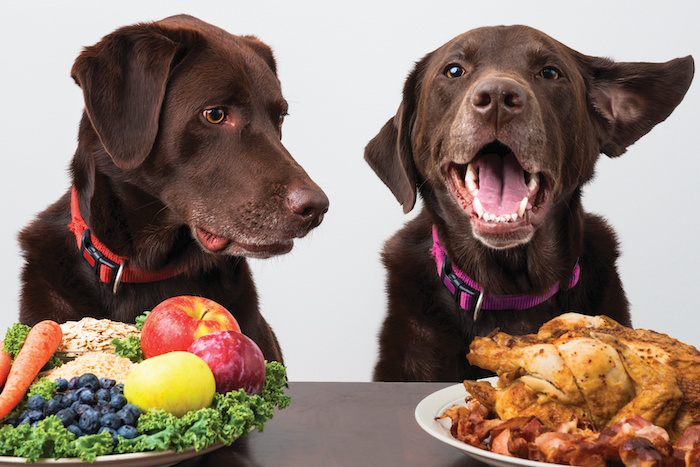-
Table of Contents
“It’s Time to Upgrade Your Dog’s Diet – For a Healthier, Happier Pet!”
Introduction
It’s time to change your dog’s diet! As a pet owner, it’s important to make sure your furry friend is getting the nutrition they need to stay healthy and happy. With so many different types of dog food available, it can be difficult to know which one is best for your pup. This article will provide you with some tips and advice on how to choose the right diet for your dog and make sure they get the nutrition they need.
How to Transition Your Dog to a Healthier Diet
Transitioning your dog to a healthier diet is an important step in ensuring your pet’s long-term health and wellbeing. While it may seem daunting, the process can be made easier with a few simple steps.
First, consult with your veterinarian to determine the best diet for your dog. Your vet can provide advice on the type of food that is best suited to your pet’s age, breed, and lifestyle.
Once you have chosen the right food, it is important to transition your dog slowly. Start by mixing the new food with the old food in gradually increasing proportions. This will help your dog adjust to the new diet without experiencing any digestive issues.
It is also important to ensure that your dog is getting enough exercise. Exercise helps to keep your pet healthy and can also help to reduce the risk of obesity.
Finally, make sure that your dog has access to plenty of fresh, clean water. This will help to keep your pet hydrated and can also help to reduce the risk of digestive issues.
By following these steps, you can help to ensure that your dog is getting the nutrition it needs to stay healthy and happy. With a little patience and dedication, you can transition your pet to a healthier diet in no time.
The Benefits of Adding Superfoods to Your Dog’s Diet
Adding superfoods to your dog’s diet can provide numerous health benefits. Superfoods are nutrient-rich foods that are packed with vitamins, minerals, antioxidants, and other beneficial compounds. They can help to boost your dog’s immune system, improve their digestion, and even reduce the risk of certain diseases.
One of the most important benefits of adding superfoods to your dog’s diet is that they can help to improve their overall health. Superfoods are packed with essential vitamins and minerals that can help to keep your dog’s body functioning properly. They can also provide antioxidants that can help to protect your dog’s cells from damage caused by free radicals. Additionally, superfoods can help to reduce inflammation, which can help to reduce the risk of certain diseases.
Another benefit of adding superfoods to your dog’s diet is that they can help to improve their digestion. Superfoods are rich in fiber, which can help to keep your dog’s digestive system running smoothly. Fiber can also help to reduce the risk of constipation and other digestive issues. Additionally, superfoods can help to improve your dog’s nutrient absorption, which can help to ensure that they are getting the most out of their food.
Finally, adding superfoods to your dog’s diet can help to boost their immune system. Superfoods are packed with vitamins and minerals that can help to strengthen your dog’s immune system and protect them from illnesses. Additionally, superfoods can help to reduce inflammation, which can help to reduce the risk of certain diseases.
In conclusion, adding superfoods to your dog’s diet can provide numerous health benefits. Superfoods are packed with essential vitamins and minerals that can help to keep your dog’s body functioning properly. They can also help to improve your dog’s digestion and boost their immune system. For these reasons, adding superfoods to your dog’s diet is a great way to ensure that they are getting the most out of their food.
The Dangers of Overfeeding Your Dog
Proper nutrition is essential for a dog’s health and wellbeing. However, overfeeding can lead to a variety of health issues that can be detrimental to your pet’s health. It is important to understand the risks associated with overfeeding your dog and to take steps to ensure that your pet is receiving the right amount of food.
One of the most common risks associated with overfeeding is obesity. Dogs that are overweight are more prone to a variety of health issues, including joint pain, diabetes, and heart disease. Additionally, obesity can lead to a decrease in your pet’s quality of life, as they may not be able to participate in activities that they once enjoyed.
Another risk associated with overfeeding is the development of digestive issues. When a dog consumes too much food, their digestive system can become overwhelmed, leading to vomiting, diarrhea, and other digestive issues. Additionally, overfeeding can lead to an imbalance in the bacteria in the gut, which can lead to further digestive issues.
Finally, overfeeding can lead to an increase in the amount of plaque and tartar on your pet’s teeth. This can lead to dental issues, such as gum disease and tooth decay.
It is important to ensure that your pet is receiving the right amount of food. Speak to your veterinarian about the appropriate amount of food for your pet’s size and activity level. Additionally, be sure to provide your pet with plenty of exercise to help them maintain a healthy weight. By taking these steps, you can help ensure that your pet remains healthy and happy.
How to Read Dog Food Labels and Choose the Right Food
When it comes to choosing the right food for your dog, it is important to read the labels on the food carefully. Knowing what to look for and understanding the information on the label can help you make an informed decision about the best food for your pet.
First, check the label for the guaranteed analysis. This section will tell you the minimum percentages of crude protein and fat, and the maximum percentages of fiber and moisture. The percentages of protein and fat should be appropriate for your dog’s age, size, and activity level.
Next, look at the ingredients list. The first few ingredients should be whole foods, such as meat, fish, or poultry. Avoid foods that list by-products, such as meat by-products, as the first few ingredients.
Also, check the label for any artificial colors, flavors, or preservatives. These are not necessary and can be potentially harmful to your dog.
Finally, look for a statement from the Association of American Feed Control Officials (AAFCO). This statement will indicate that the food has been tested and meets the nutritional requirements for your dog’s life stage.
By taking the time to read the labels on dog food and understanding the information they contain, you can make an informed decision about the best food for your pet.
The Pros and Cons of Raw Feeding for Dogs
Raw feeding for dogs is a growing trend among pet owners, as it is believed to provide a more natural diet for their canine companions. While there are many benefits to this type of diet, there are also some potential drawbacks that should be considered before making the switch.
Pros
One of the main advantages of raw feeding for dogs is that it provides a more natural diet. This type of diet is based on the ancestral diet of wild canines, which is high in protein and low in carbohydrates. This diet is also rich in essential vitamins and minerals, which can help to keep your dog healthy and active. Additionally, raw feeding can help to reduce the risk of certain health issues, such as allergies and digestive problems.
Another benefit of raw feeding is that it can be tailored to meet the individual needs of your dog. This allows you to provide a diet that is specifically designed to meet their nutritional requirements. Additionally, raw feeding can be more cost-effective than commercial dog food, as you can purchase the ingredients in bulk and prepare the meals yourself.
Cons
One of the potential drawbacks of raw feeding is that it can be time-consuming and labor-intensive. Preparing the meals requires careful planning and preparation, as well as the ability to source the necessary ingredients. Additionally, there is a risk of food-borne illnesses if the meals are not prepared properly.
Another potential issue is that raw feeding may not provide a balanced diet for your dog. This is because it is difficult to ensure that all of the necessary vitamins and minerals are included in the meals. Additionally, some dogs may not be able to digest certain types of raw food, such as bones or organ meats.
Overall, raw feeding can be a beneficial diet for dogs, but it is important to consider the potential drawbacks before making the switch. It is also important to consult with your veterinarian to ensure that your dog is receiving a balanced and nutritious diet.
Conclusion
It’s time to change your dog’s diet if you want to ensure that your pet is getting the best nutrition possible. A balanced diet is essential for your dog’s health and wellbeing, and switching to a new diet can help to improve your pet’s overall health and energy levels. With the right diet, your dog can enjoy a long and healthy life.
- Video Not Found!!
- Error Code : 404
- Message : The playlist identified with the request's
playlistIdparameter cannot be found.











